Happy (belated) Halloween, folks! I was going to skip the holiday-themed article, but then Wizards had to go and spoil a return to Innistrad in Shadows of Innistrad, and that seemed worthy of celebration. I still have so many vivid memories from drafting in that block that sometimes I forget how long ago it came out, and the popularity of Jace, Vryn’s Prodigy is a reminder that they’re still figuring out how to properly balance double-sided cards. We can almost certainly look forward to some more of those odd cards, and I’m holding out hope that we might see some neat double-sided commanders this time around. And maybe no more planeswalkers with unnecessarily complex color identity.
Anyway, in honor of Halloween and the Shadows of Innistrad teaser, here we have a user letter focused on one of my favorite tribes: Vampires!
|
Dear Azami-
I am looking for advice on building a Vish Kal EDH. I’ve had fun with Vish before, but this time I’m trying to make a vampire tribal with a white splash. I Commander: Vish Kal, Blood Arbiter Creatures: 26 Planeswalkers: 3 Spells: 33 Lands: 37 Plains 6 Swamp 10
So that’s the 100. Budget wise, I’d like to keep the changes under $75 if possible. My budget is fairly limited, and I still have to buy/trade for some of -Mike |
Coincidentally, I’m sure, Zendikar and Innistrad have an abundance of vampiric bloodsuckers. One of the reasons I found this particular submission so
appealing is that it didn’t seem to have any of the new Battle for Zendikar cards in it, and I find there are a couple of Vampires in that set
worth checking out.
I would also have to agree with Mike’s assessment about his white splash. In a tribe like the Vampires, there isn’t enough support for white to justify a
full commitment to the color. Complicating this, Vish Kal, Blood Arbiter demands white mana, and, (genuine) thanks to all the different cycles of dual
lands printed in the last couple of years, it’s not that hard to build a manabase that can support a stronger commitment to white than the tribe can. Mike
handled this by filling up on white removal spells, and it’s a decent strategy. I thought, however, that it might be more interesting to take some of those
slots and weave them into a secondary theme.
Don’t worry, it enmeshes quite nicely with the tribal identity and flavor.
Unholy Ground
Out
(6):
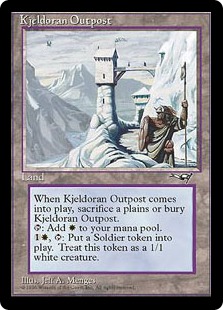

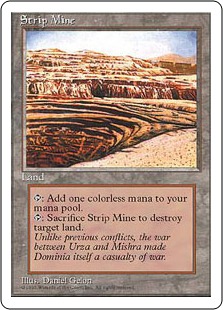
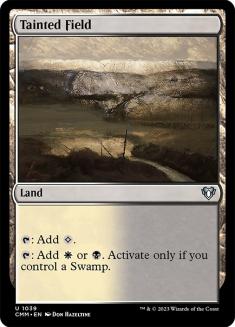
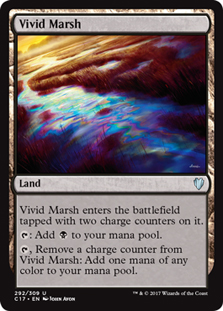
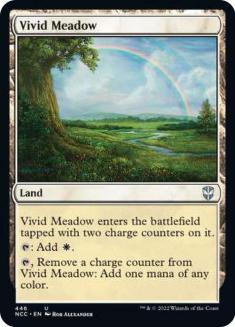

In
(7):
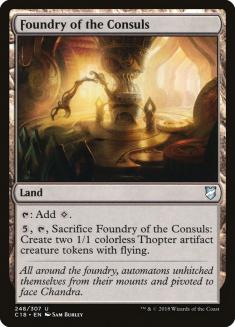
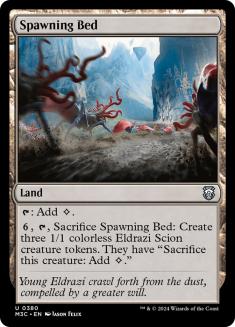
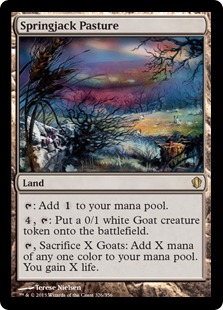




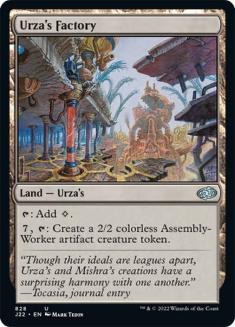

To start, Vish Kal feels like the type of Commander deck that wants to be playing 38 lands. As a seven-drop in a color combination not independently known
for its ramp, you’re going to want to be hitting all your land drops. While Orzhov still has access to all of mono-black’s mana generation, being split
across two colors means that, barring ready access to tutors, it’s probably not worth relying on the explosive mana generation power of Urborg, Tomb of
Yawgmoth and Cabal Coffers. Urborg’s still a good land, but that’s why I didn’t add in Cabal Coffers.
I still thought Mike’s deck needed a few more Swamps, though. I brought them in for the same reason I took out Tainted Fields: Swamps tend to matter more
than most of the other basic land types. If you don’t have a lot of them, something like Tainted Field ends up being useless, no matter how many other
sources of black mana you have. Similarly, I took out Kjeldoran Outpost because that card demands the sacrifice of a Plains, and the deck should not be
running too many of those. The Vivid lands seemed more useful turned into Swamps or action, since not only are they extra dual lands this particular deck
doesn’t need, but they’re also complete irritants in practice. Keeping track of counters on a land that taps for mana (i.e. not Dark Depths) is bad enough
without Commander’s sprawling boardstates.
As for Strip Mine, I am beginning to think that Ghost Quarter is a better land destruction card in all but the Spike-iest of metagames. Ghost Quarter can
be used in for a variety of political means and it can help fix your mana in a pinch.
For the rest of the free slots, I wanted to bring in lands that offer sacrificial fodder. That’s the two new colorless lands that sacrifice themselves to
create multiple tokens (Spawning Bed and Foundry of the Consuls), and the two colorless lands that provide repeatable fuel (Springjack Pasture and Urza’s
Factory). None of the creatures or rates on these cards is particularly outstanding, but it is helpful that three of the four create tokens with power.
Sometimes this deck is going to win by turning creatures sideways, and that’s the simplest Magic there is!
Of course, that means it’s still incredibly complex. Magic is such a wonderful game.
Run Rampant
Out
(2):
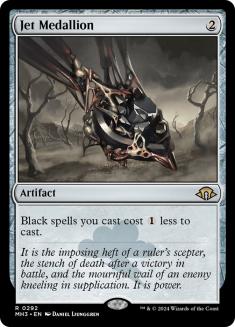
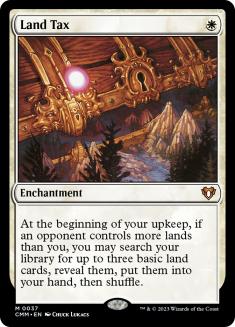

In
(1):
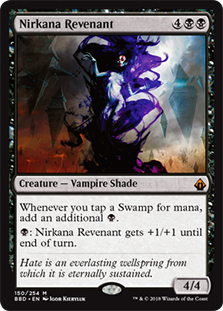

Land Tax is an incredibly powerful card, and I love it in a lot of decks. But not every deck. Relying on ramp and fixing in a splash color isn’t ideal, and
Land Tax tends to make people nervous due to its raw power level. That’s a risk worth taking when you can do something interesting with those lands, but if
you’re just using it for its base functionality, it’s probably more aggro than it’s worth. Similarly, there are a lot of decent low-drop Vampires, so
taking a turn off to play a Jet Medallion seems like a waste. Maybe if it were a better topdeck it’d be worth the slot, but as is it seems like it’s more
effective in a different type of deck.
Instead, let’s bring in Nirkana Revenant. Now, I’m not also suggesting you add Crypt Ghast, though it might be worth considering down the line for the
extort synergy, but I think the fact that Nirkana Revenant will only double most of your lands is more than balanced out by the vampiric tribal identity. I
can see why she wasn’t in there from the start, though; this card ended up being the most expensive one I’m suggesting.
Drink Blood
Out
(6):
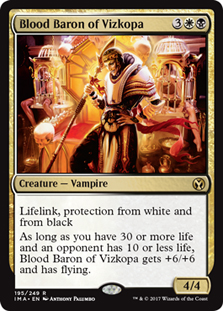
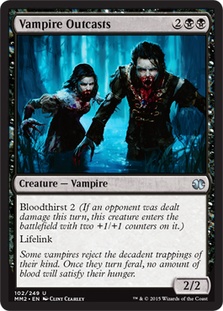
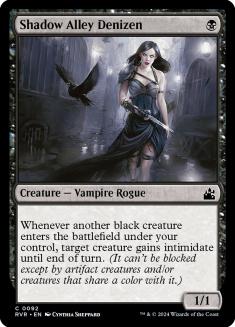
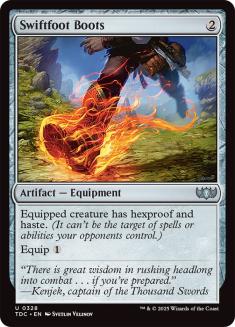
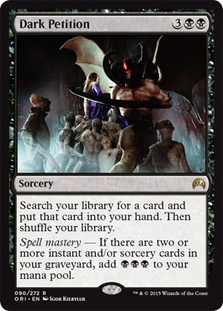
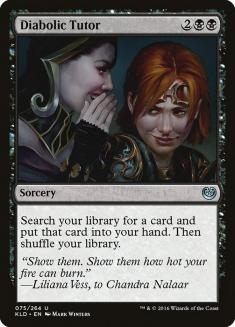

In
(8):
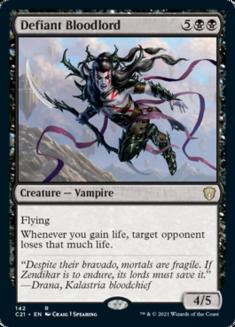
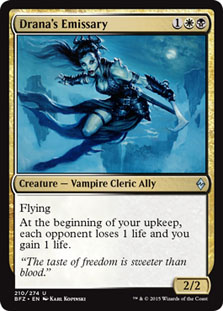
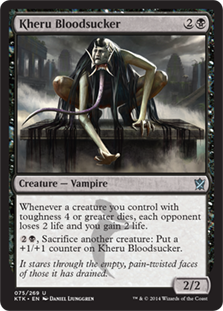
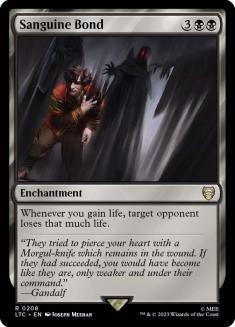

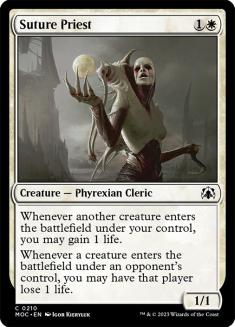
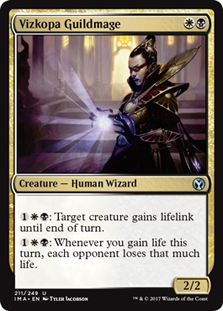
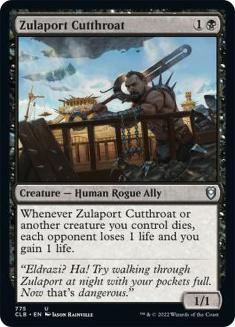
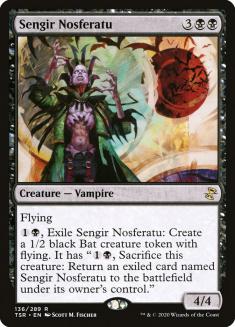

Some decks make it to the lategame by elaborate defenses. This deck is going to make it to the lategame with lifegain. It’s flavorful, and for that reason
many Vampires have synergy with lifegain and life drain. We’re just elevating it from a tribal quirk to an explicit secondary theme.
For that secondary theme to have some juice, we need to take out some of the cards that don’t speak specifically to that theme. To start, let’s look at
Shadow Alley Denizen. It looks like a deceptively solid card, since it’s a low drop member of the tribe who grants evasion. But it has two issues. First,
intimidate is not a great mechanic. It’s a classic mechanic, but I have to agree with the decision to abandon it; it’s incredibly high variance in a way
that doesn’t feel great when you’re playing. Second, this guy promotes sloppy play. Commander is a format in which Wrath of God effects run wild. Many of
them, like the recently reprinted Rout (with that gorgeous new Elesh Norn, Grand Cenobite art) and Consume the Meek (included in the last duel deck), can
be cast at instant speed. For that reason, it’s usually better to play your creatures in the second main phase. Now, the caveat in that sentence includes
the Fervor and Concordant Crossroads deck amongst others, but I don’t think it includes this deck. This is primarily a creature combat deck; these decks
want to make sure that even if they did get five-for-oned by an instant speed Wrath of God, they got as much damage in as possible.
The next two, Blood Baron of Vizkopa and Vampire Outcasts, are both very similar cards. One may be much better than the other, but these are both cards
whose sole function is to be a Baneslayer Angel. I tend to shy away from these cards. I considered leaving in the Blood Baron, since the protection ability
is rather strong, but between the restraining conditions of its ability and the fact that its protection means you can never target it yourself (and there
are one or two reasons you’d want to), it seemed like it would be better as something a little better.
I’m not a huge fan of Swiftfoot Boots. Being able to attack a turn faster due to haste is ameliorated when you have to pay an extra mana to do it. Shroud
and hexproof are useful in metas heavy on targeted removal, but I generally find myself liking Darksteel Plate better. Anyway, I think all of these cards
are more relevant when a person can’t immediately get card advantage from one’s commander. Luckily, you can do that with Vish Kal, Blood Arbiter. Even if
they kill it in response to the equip or even an enters the battlefield trigger, you can respond with a murder frenzy. Which, when you have cards like
Blood Artist on the field, is going to benefit you in more ways than one.
My bias against tutors is the main reason I cut Diabolic Tutor and Dark Petition, but I’m not a huge fan of either of them in this deck; a tribal deck
should be creature heavy, which makes spell mastery a difficult condition to trigger. If I were to run a tutor in this particular type of deck, I think I’d
go with Demonic Collusion, as this is one of those decks where the buyback could prove advantageous.
Here’s where I brought in the bloodsucking mechanics. Now, extort was not one of them; it may be worth considering extort down the line, since it dovetails
nicely with the other themes, but Tithe Drinker was the only Vampire with extort, and I felt I was losing the tribal element. But that is not to say I was
restricted solely to Vampires in my additions. For example, I brought in Suture Priest and Zulaport Cutthroat, neither of whom are Vampires. They both have
strong synergies in a life drain deck that’s sacrificing creatures, though! They’re the backup for Blood Artist and Falkenrath Noble, which are quite
important cards. What I like about these is that, while you can use their abilities aggressively, machine-gunning opponents with sacrifice loops and the
like, they’ll be left alone for far longer if you’re just using them to ameliorate the loss of your forces and complicate combat math. For example, if you
have all four of these things out and you attack with a 2/2 creature, blocking that creature is no longer a simple decision. They act as a shield, because
you can get more value from chump blocking when they’re on the board. And they’ll just gain you life, which is how you stay alive in most games.
Though certainly not all games.
Kheru Bloodsucker is a weird spin on those cards; the part that’s a sacrifice outlet is balanced out by the restriction on the trigger condition. Drana’s
Emissary is probably one of the weaker additions to the deck, but it’s an evasive Vampire that provides value in a stalemate, and it was on theme. Then
there’s Sengir Nosferatu, which is also not the most powerful card in the deck. It is the most flavorful, though! While four mana is a bit much for a
repeatable sacrifice trigger, it’s quite interesting how they represented the Vampire Bat transformation prior to the advent of double-sided cards in Innistrad block. I have certainly come around since they were first spoiled, though I occasionally find it irksome when one of their images bleeds
through a theoretically opaque sleeve.
Finally, there’s the trifecta: Sanguine Bond, Sanguine Brawn (by which I mean Defiant Bloodlord), and Vizkopa Guildmage. Notably absent from this list?
Exquisite Blood. While I kinda hate that combo, this ability is often a fun one, and it amps up your drain effects.
Terrifying Tokens
Out
(1):
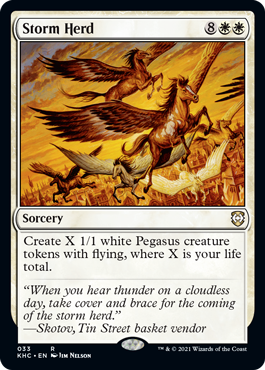

In
(1):
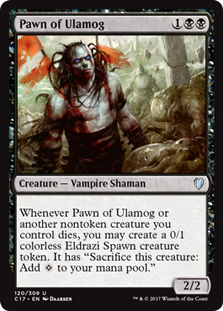

Pawn of Ulamog is a good card. Every time you sacrifice a real creature, you get a token that can self-sacrifice or ramp. It’s a force multiplier in a deck
like this, although it will almost certainly not get you as many tokens as Storm Herd. But it’s a low-drop creature, it’s a Vampire, and it can be recurred
from the graveyard. That’s exactly what this deck needs.
Bad Moon Rising
In
(3):
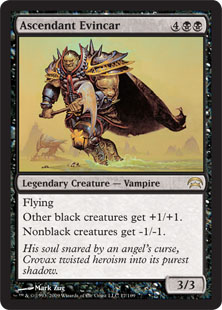
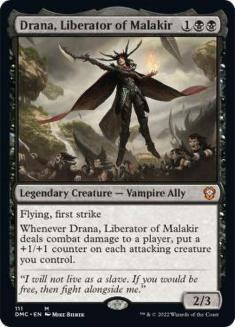
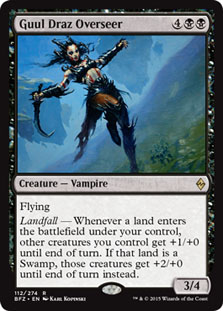

While these three cards all serve as anthems, which are important force multipliers when you’re turning creatures sideways to win, they have different
strengths. Ascendant Evincar occasionally acts as removal, although he insta-kills some of your own creatures. Drana, Liberator of Malakir is an early
board presence and can provide permanent bonuses, but she’s not the strongest aerialist. Guul Draz Overseer comes equipped with evasion and a decent body,
but it’s a seven-drop that requires landfall to give its bonus, which means it’s not hitting the table early. But they’re all Vampires. And that’s going to
be useful in the next section.
Thriller!
In
(3):
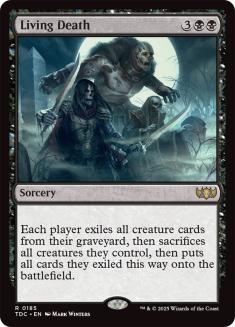
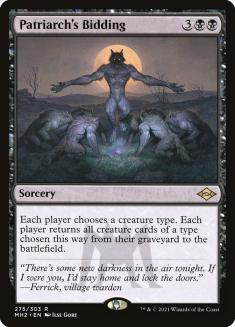
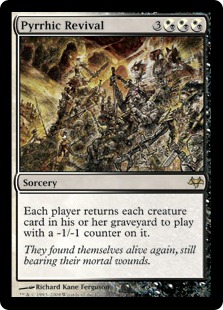

Creature combat decks generally lose Commander games when their board presence gets wiped out and they struggle to rebuild. Black decks can offset this
disadvantage with mass Resurrection spells. When someone Wrath of Gods your team, they’ll have a Pyrrhic Victory when you get a bunch of death triggers and
then immediately bring your team back to die again. That’s why I brought in Pyrrhic Revival over Twilight’s Call, for what it’s worth; the decks you’re
going to have the hardest time getting through are other go-wide combat decks, many of which have Llanowar Elves or Warren Instigators. You all suffer the
same drawback, but since you’re going to be making the best use of the death triggers, you win.
As for the other two, Living Death doubles as a nice mass removal spell, especially when you can sacrifice away your team before it resolves to leave you
with a net-positive board presence. And Patriarch’s Bidding is a classic in tribal decks, though it may occasionally help other decks more than it helps
you.
Whispered Secrets
Out
(4):
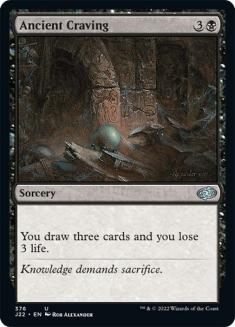
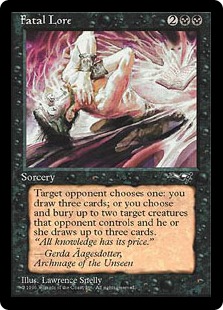
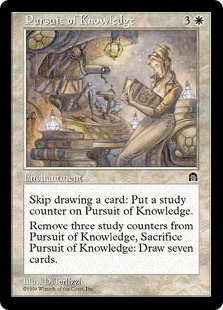
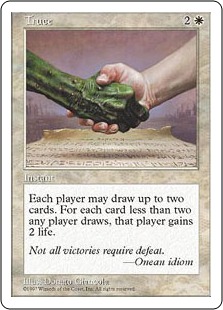

In
(6):
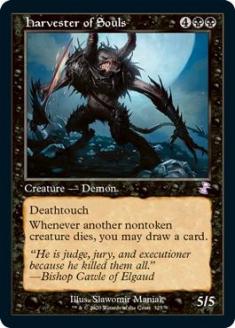
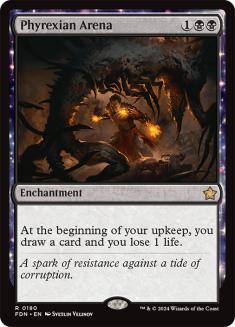
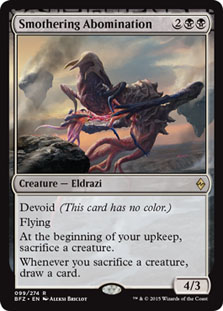
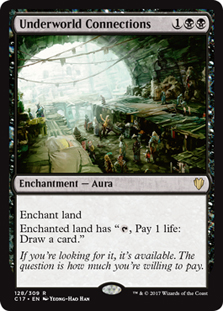
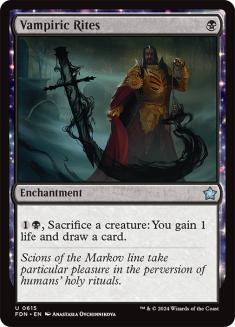
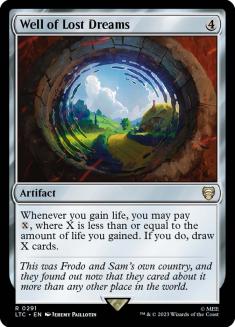

It’s always cool to see cards I don’t immediately recognize, and Fatal Lore and Pursuit of Knowledge are definitely that. Perhaps I was misevaluating them,
but I didn’t particularly like either of them. Three cards is a hefty price to pay for killing two creatures, and it seems like there would rarely be an
incentive for your opponents to give you the bribe. Pursuit of Knowledge seems like a lot of risk for a princely payoff, but I really don’t think those
rewards balance so much risk. Truce is good in decks that have a “Hugs” component, but in a deck like this it’s just splashed draw. Finally, Ancient
Craving isn’t a permanent, and thus can’t be recurred with Obzedat’s Aid.
Harvester of Souls and Smothering Abomination aren’t just permanents, but they’re creatures. You can get them back with almost any of your recursion.
Phyrexian Arena and Underworld Connections both provide a reliable stream of cards, and their drawback is balanced out when you’re gaining at least one
life per turn, which seems likely. Well of Lost Dreams turns all those lifegain triggers into potential cards at a relatively economical conversion rate.
And I love Vampiric Rites. It’s cheap, it’s a sacrifice outlet, it gains you life directly, and it draws cards.
High Stakes
Out
(15):
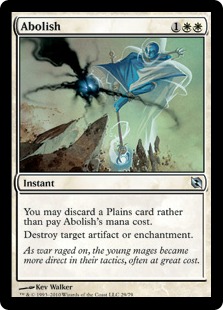
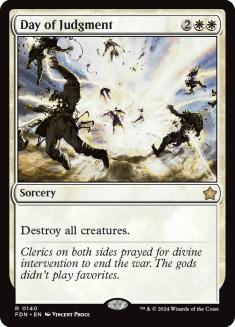
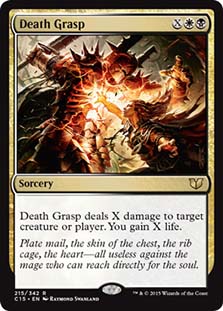
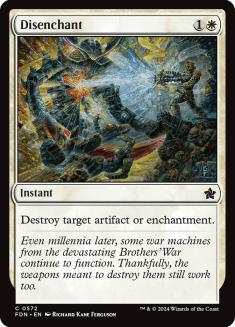
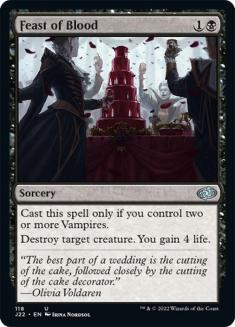
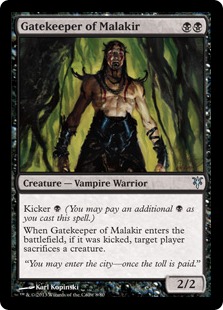
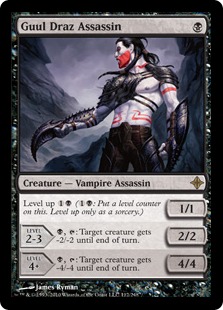
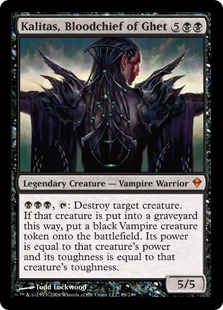
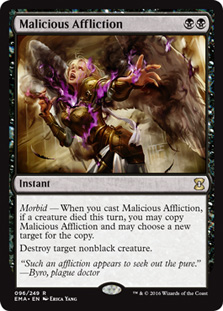
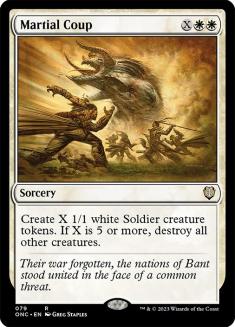
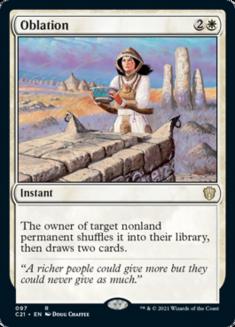
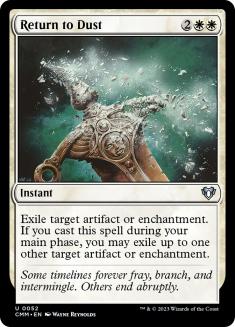
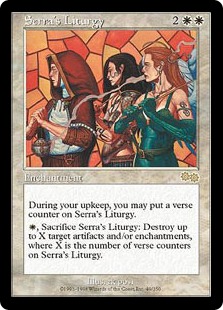
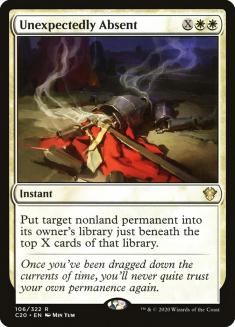
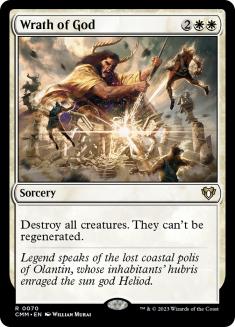

In
(5):
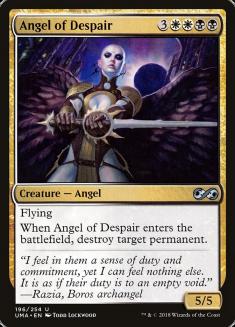
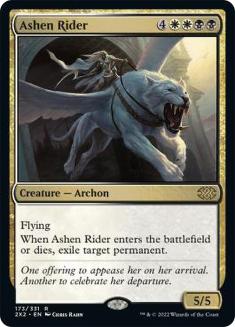
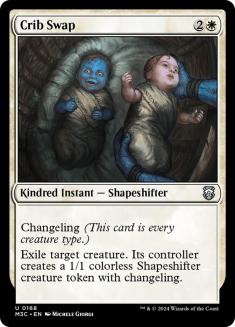
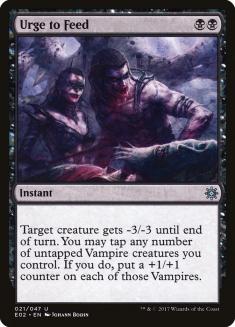
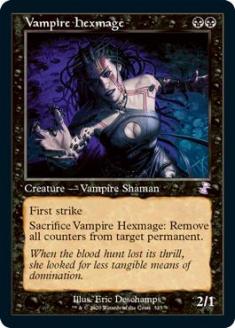

Here’s where I found most of the slots. Many of these cuts were due to color. White’s best as a splash in a deck like this, and that means cutting many of
these white removal spells. It’s also a factor that they’re removal spells, since the deck has means of recurring permanents. That’s why I brought
in Angel of Despair and Ashen Rider. Sure, it’ll take you a while to get them out, but once you do, they’re trouble on the battlefield or in the graveyard.
That recursion synergy is why I cut Vampires like Gatekeeper of Malakir, Guul Draz Assassin, and Kalitas, Bloodchief of Ghet. None of these plays
particularly well with mass reanimation. Gatekeeper only gets its trigger when you cast it, and the Assassin and Kalitas are both slow. Very slow. I
brought in Vampire Hexmage, on the other hand, because, while it’s limited to killing planeswalkers and The Mimeoplasm, it knows the value of
self-sacrifice, and it has a combat-relevant body, thanks to the first strike.
Of course, you are going to want some targeted removal in a deck like this. That’s why, in addition to keeping all-stars like Mortify and Vindicate, I
brought in Crib Swap and Urge to Feed. Neither of those is the best removal spell in a vacuum, but you can use Crib Swap defensively if you ever need a
Vampire at instant speed, while its consolation prize slightly ameliorates the offense of the removal. Urge to Feed, on the other hand, is an instant speed
anthem effect. The two best times to play it are generally after you’ve declared your blockers or at the last end step before your turn begins, but in
either situation it can provide a startling expansion of your forces.
The List
Creatures (38)
- 1 Mephidross Vampire
- 1 Ascendant Evincar
- 1 Angel of Despair
- 1 Skeletal Vampire
- 1 Sengir Nosferatu
- 1 Vampire Nocturnus
- 1 Blood Seeker
- 1 Bloodghast
- 1 Malakir Bloodwitch
- 1 Vampire Hexmage
- 1 Vampire Nighthawk
- 1 Anowon, the Ruin Sage
- 1 Butcher of Malakir
- 1 Kalastria Highborn
- 1 Drana, Kalastria Bloodchief
- 1 Nirkana Revenant
- 1 Pawn of Ulamog
- 1 Viscera Seer
- 1 Captivating Vampire
- 1 Sangromancer
- 1 Suture Priest
- 1 Bloodlord of Vaasgoth
- 1 Vish Kal, Blood Arbiter
- 1 Falkenrath Noble
- 1 Bloodline Keeper
- 1 Harvester of Souls
- 1 Blood Artist
- 1 Dark Impostor
- 1 Necropolis Regent
- 1 Vizkopa Guildmage
- 1 Ashen Rider
- 1 Kheru Bloodsucker
- 1 Defiant Bloodlord
- 1 Smothering Abomination
- 1 Drana's Emissary
- 1 Guul Draz Overseer
- 1 Drana, Liberator of Malakir
- 1 Zulaport Cutthroat
Planeswalkers (3)
Lands (38)
- 5 Plains
- 13 Swamp
- 1 Shizo, Death's Storehouse
- 1 Orzhov Basilica
- 1 Orzhova, the Church of Deals
- 1 Ghost Quarter
- 1 Terramorphic Expanse
- 1 Urza's Factory
- 1 Urborg, Tomb of Yawgmoth
- 1 New Benalia
- 1 Springjack Pasture
- 1 Reliquary Tower
- 1 Bojuka Bog
- 1 Evolving Wilds
- 1 Command Tower
- 1 Isolated Chapel
- 1 Vault of the Archangel
- 1 Orzhov Guildgate
- 1 Temple of Silence
- 1 Scoured Barrens
- 1 Foundry of the Consuls
- 1 Spawning Bed
Spells (21)
- 1 Living Death
- 1 Mutilate
- 1 Patriarch's Bidding
- 1 Well of Lost Dreams
- 1 Skullclamp
- 1 Phyrexian Arena
- 1 Vindicate
- 1 Mortify
- 1 Crib Swap
- 1 Profane Command
- 1 Pyrrhic Revival
- 1 Sanguine Bond
- 1 Blade of the Bloodchief
- 1 Blood Tribute
- 1 Urge to Feed
- 1 Unburial Rites
- 1 Underworld Connections
- 1 Merciless Eviction
- 1 Obzedat's Aid
- 1 Tragic Arrogance
- 1 Vampiric Rites

As you can see, I’ve brought the deck up to 37 creatures, which should help ensure you’re drawing pieces more reliably. I’ve left in cards like Profane
Command which, while it has a fear mode I don’t love, works well with several of the added themes. I even kept in Sorin Markov, because if you can’t play
that card in a tribal Vampire deck with one point life drains, when can you play him?
Tragic Arrogance and Merciless Eviction are your hedge against indestructible permanents, Tragic Arrogance in particular working quite well with Crib Swap.
Blade of the Bloodchief can help Kheru Bloodsucker by fattening up your creatures with insufficient toughness. Blood Tribute is a nasty combination with
Sanguine Bond, but with no means of recurring spells it’s a one-shot kill that can only hit one player. It’s powerful, but it’s not Splinter Twin.
All in all, it has a solid curve and a bunch of two- and three-drops, and it will ensure you’ll be starting the game on your toes. While this deck offers
the potential for more complex lines of play, a lot of times you’ll just be turning Vampires sideways. And there’s a simple beauty to doing that.
The Price
The price is not eternal damnation. The price is just under budget. What I particularly like about this is that four cards account for the vast majority of
the price, and, while they’re good, they’re not immediately necessary. So if you don’t feel like splurging on Phyrexian Arena right now, Greed is
(ironically) quite reasonably priced at $0.49. Nirkana Revenant can be replaced by Crypt Ghast, Patriarch’s Bidding by Twilight’s Call, and Drana,
Liberator of Malakir with your anthem of choice. Personally, I’m rather fond of Obelisk of Urd in here.
|
Card |
Price |
|
0.25 |
|
|
0.25 |
|
|
0.25 |
|
|
0.25 |
|
|
0.25 |
|
|
0.25 |
|
|
0.29 |
|
|
0.29 |
|
|
0.29 |
|
|
0.49 |
|
|
0.49 |
|
|
0.49 |
|
|
0.49 |
|
|
0.49 |
|
|
0.49 |
|
|
0.49 |
|
|
0.49 |
|
|
0.59 |
|
|
0.75 |
|
|
0.85 |
|
|
0.99 |
|
|
1.05 |
|
|
1.49 |
|
|
1.59 |
|
|
2.49 |
|
|
2.49 |
|
|
3.59 |
|
|
9.39 |
|
|
9.99 |
|
|
15.29 |
|
|
16.99 |
|
|
Total |
73.83 |
With the $20 store credit Mike will be receiving for participating in Dear Azami, it should be relatively painless to turn this deck from a Bela Lugosi
into more of a Gary Oldman. Both have their merits, but Oldman is more of an acter.
And yes, that’s not a typo.
Want to submit a deck for consideration to Dear Azami? We’re always accepting deck submissions to consider for use in a future article. Only one deck
submission will be chosen per article, but being selected for the next edition of Dear Azami includes not just deck advice but also a $20 coupon to
StarCityGames.com
!
Email us a deck submission at mailto:[email protected]
Like what you’ve seen? Feel free to explore more of Dear Azami
here, in the Article Archives
! And feel free to check Jess’s own
Command of Etiquette
column on
Hipsters of the Coast
, for more Commander and casual content. Now on Thursdays!

